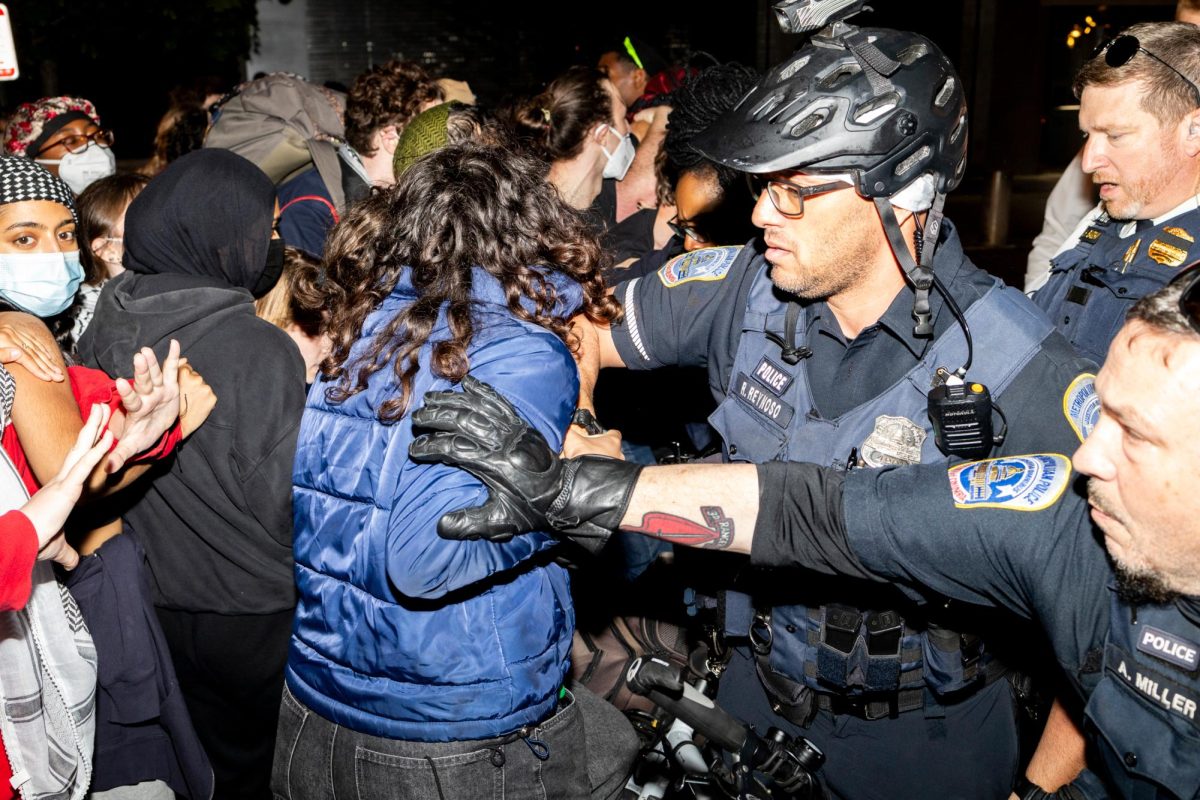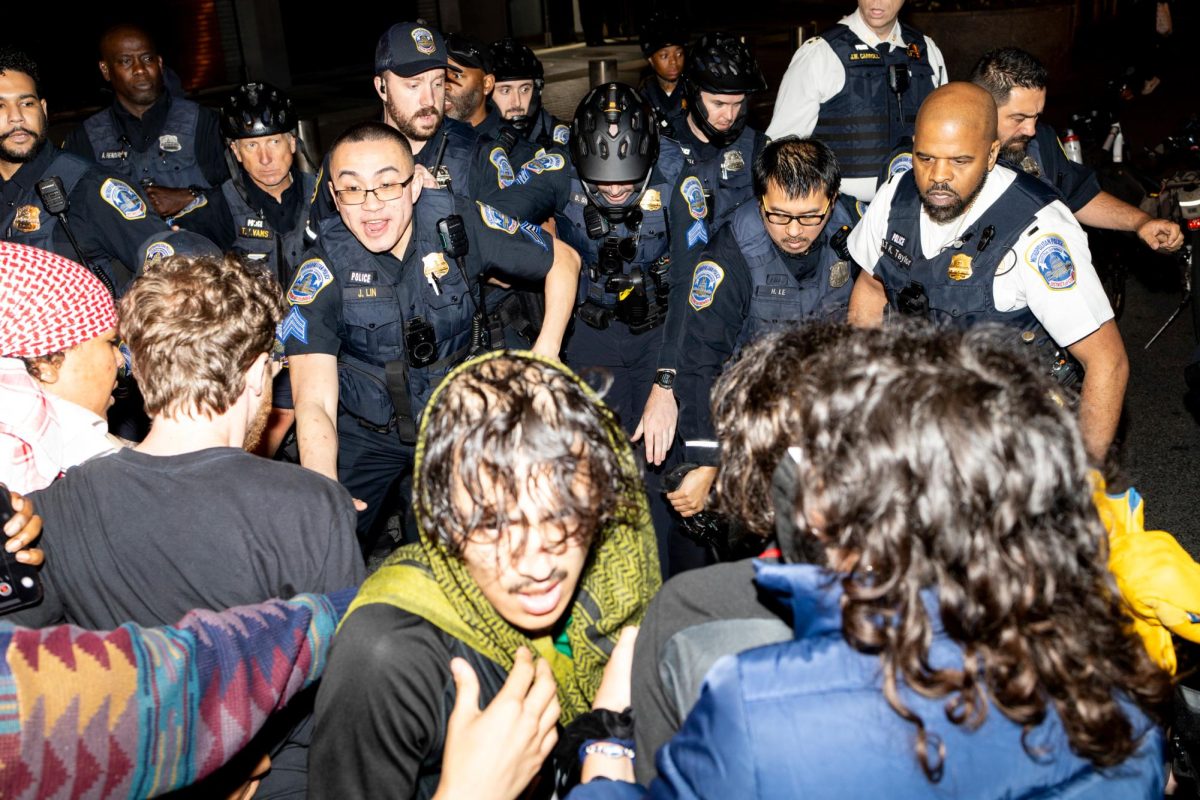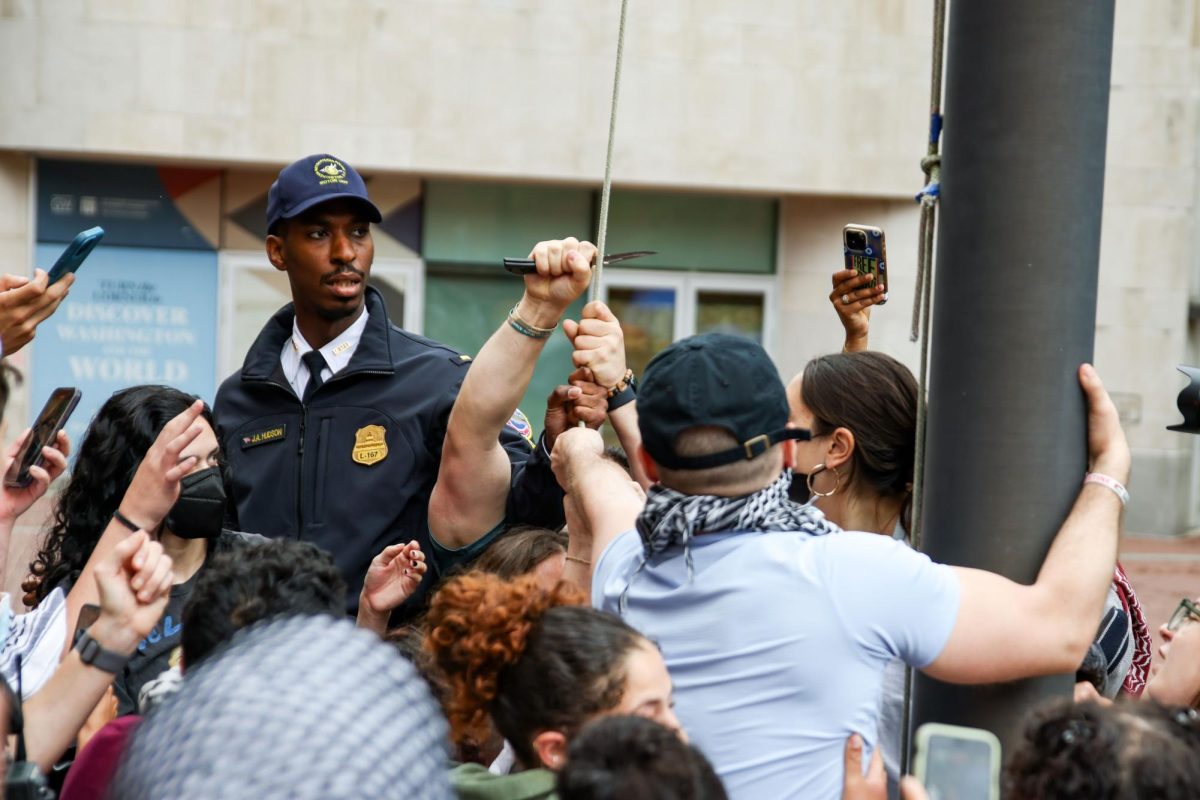University security officials are advising students to take extra precautions, including informing roommates of their whereabouts and acquiring a battery-powered radio, in light of the federal government’s decision last week to push the national security alert level to orange.
A GW security alert distributed to residence halls and posted on the University’s Campus Advisory Web site also suggests students have a plan for contacting home. Someone who lives in another area code could also pass a message home or keep extra prescription medications and a flashlight, the Web site advises.
“We are working with the same procedures that we have used in the past when the terror alert was raised,” said John Petrie, assistant vice president for Public Safety and Emergency Management. “We have sent a flyer around to the residence halls to keep students informed and we have been updating the Web site.”
Petrie said the campus alert Web site, www.gwu.edu/~gwalert, has received more than 10,000 hits per day since the terror alert level was raised the first time in February.
The Department of Homeland Security increased the terror alert level to orange again last week, when the United States launched the war on Iraq. The University has not increased GW’s alert, though campus security is operating at a heightened level.
“If the alert level rises, there will be a tightening of security that will be very obvious to community members,” University Police Chief Dolores Stafford said. “Obviously, we’re concerned when the government goes to Code Orange. But there has been no intelligence that GW or any other college is a target.”
Stafford would say little about the steps the department would take if the national alert level were raised to red; however, she said the presence would be much more noticeable and students would need to use their GWorld cards to enter campus buildings.
The University’s alert system is unconnected with the Department of Homeland Security’s system, a quality Petrie said is advantageous.
“The national alert system has to respond to threats against the whole country, while our system deals with concerns specifically to the University,” he said. “Since (the two systems) are not connected, it gives us the flexibility of not having a specific set of responses.”
Stafford said UPD has raised its alert level several times since the September 11 attacks. UPD bases its security decisions on intelligence from MPD and the federal government.
Stafford said each of UPD’s 22 vehicles, including 4-RIDE vans, are equipped with loudspeakers for emergency broadcasts. She said the system was successfully tested several months ago.
Petrie said the D.C. university consortium has been given a seat on the mayor’s command center in the event of a citywide emergency in an effort to better represent campuses in emergency responses.
Other universities in the District are also preparing for potential emergencies.
“We have a public safety team including students, faculty and staff that will help coordinate the campus response to an incident,” said Todd Sedmak, a spokesman for American University. He said that the volunteer program targeted student leaders from organizations including Greek-letter life and first aid responders.
Each of the 200 team members has a backpack with a hard copy of the university’s emergency plan, flashlights and first aid supplies.
“The students and team members have regular meetings and ongoing training in how to respond,” Sedmak said, adding that the team members will help direct people to safety in the event of a disaster. “In the event of an emergency, we want the students to be looking for someone who knows what to do.”
Unlike GW, American has tied its campus alert system to the national Homeland Security Department level.
“If it is code red for Washington, it applies to AU as well,” Sedmak said.
Georgetown University has also prepared a detailed emergency plan.
Tests of alert sirens were planned for this week to alert students where to go and what to do in the event of a campus emergency, the Georgetown Hoya reported.
Officials told the Hoya that there is ongoing training to better coordinate the response to emergencies. Plans include having students take refuge in their dormitories and in campus shelters and possible evacuation.
The war has affected the campus beyond increased security.
Protesters have passed through the GW campus during demonstrations on the National Mall and at the White House.
University President Stephen Joel Trachtenberg cut a trip to China short last week when the war broke out.
“I felt that I should be here for the student body,” Trachtenberg said. “I have had the chance to meet with students about their concerns. It seems that the campus and the students are calm, cool and collected.”
Trachtenberg said the University is among the best prepared campuses in the country for an emergency.
“Since September 11 there has been an increased attention paid to security, and we are as adept as we could hope to be in handling an emergency,” he said.
-Michael Barnett contributed to this report







